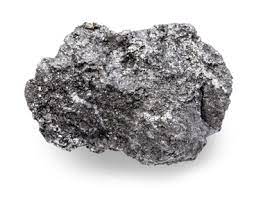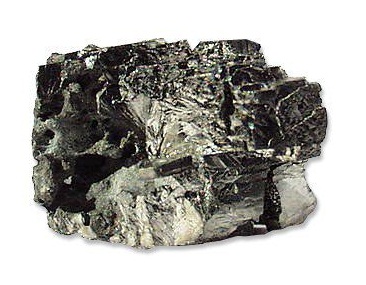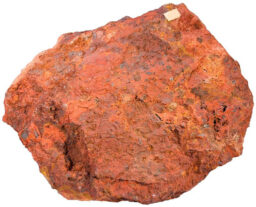Aluminum: The Lightweight Champion of Modern Industry
Aluminum, with its sleek silver sheen and remarkable lightness, might not be the first metal that comes to mind, but its impact on our world is undeniable. From soaring skyscrapers to sleek automobiles and everyday beverage cans, this versatile metal forms the backbone of countless industries. Let’s delve into the intricate world of aluminum, exploring its sources, applications, and key considerations for international traders and buyers.
Description:
Aluminum exists primarily in bauxite ore, an aluminum oxide-rich rock. Extracting the metal involves a multi-step process, including mining, refining into alumina, and smelting into pure aluminum.
Aluminum content in bauxite ore varies, typically ranging from 15% to 60%, impacting processing costs and overall yield.
Key Source Countries:
- China: The world’s leading producer, boasting vast bauxite reserves and established production facilities. Over 50% of global aluminum production originates from China.
- India: Second-largest producer, contributing around 10% of global output. Key production regions include Odisha and Chhattisgarh.
- United States: Holds approximately 6% of the global market share, with major production in Texas and Louisiana.
- Russia: Significant producer, accounting for over 4% of global output. Urals region holds extensive bauxite reserves.
- Other notable producers: Australia, Canada, Brazil, United Arab Emirates, and Indonesia contribute to the remaining global production.
World Output Volumes:
Global aluminum production reached approximately 68 million tonnes in 2023, showcasing continuous growth over the past decade. China remains the dominant force, while other major producers continue to expand their operations. However, fluctuations in demand and supply dynamics, particularly from China, can cause price volatility.
Major Producers and Market Share:
- Chinalco: The world’s largest producer, controlling roughly 12% of the global market. Operates extensive mines and smelters across China.
Rio Tinto: Australian mining giant, holding approximately 9% of the global market share. Focuses on high-grade bauxite and efficient production processes. - Aluminum Corporation of China (Chalco): Another major
Chinese producer, accounting for around 8% of global output. - United Company RUSAL: Russian aluminum giant, controlling approximately 6% of the global market.
- Other major producers: BHP Billiton, Hindalco Industries, Emirates Global Aluminium, Norsk Hydro, and numerous smaller players contribute to the remaining market share.
Forms of Trade:
Aluminum is primarily traded in two forms:
- Primary aluminum ingots: Large, cast blocks of pure aluminum (over 99.5% aluminum content). Used as raw material for downstream processing into various products.
- Semi-fabricated aluminum products: Sheets, plates, foils, extrusions, and other processed forms tailored for specific applications. Offer convenience and reduce production time for end users.
Price Trends (Past 5 Years):
Aluminum prices have experienced notable fluctuations over the past five years:
- 2019: Prices hovered around $2,000 per tonne due to balanced supply and demand.
- 2020: Pandemic disruptions caused a decrease to around $1,600 per tonne before recovering moderately.
- 2021: Surging demand from construction and transportation sectors pushed prices to over $3,000 per tonne.
- 2022: Prices corrected downwards to around $2,500 per tonne due to concerns about slowing global growth and rising energy costs in China.
- 2023: Prices maintained some volatility, ranging between $2,300 and $2,800 per tonne, influenced by geopolitical tensions and the pace of economic recovery.
Major Importing Countries:
- China: While being the top producer, China also imports significant volumes of aluminum (around 10% of its consumption) to meet its growing domestic demand.
- United States: Major importer, primarily relying on Canada and Mexico for its aluminum needs.
- European Union: Collectively a significant importer, driven by demand in the automotive and construction sectors.
- Japan: Major importer, primarily reliant on Australia and Southeast Asian countries for its aluminum supply.
- India: Growing domestic demand necessitates substantial aluminum imports, mainly from the Middle East and Africa.
Major Exporting Countries:
- China: Exported around 10% of its aluminum production in 2023, making it a major exporter despite being the top producer.
- Russia: Significant exporter, accounting for approximately 15% of global aluminum exports.
- Canada: Major exporter to the United States, contributing around 10% of global aluminum trade.
- United Arab Emirates: Growing exporter
Considerations for International Traders and Buyers of Aluminum
Aluminum, the lightweight champion of metals, offers a unique combination of strength, malleability, and corrosion resistance, making it a critical material in countless industries. However, navigating the intricacies of the aluminum market requires careful consideration of various factors. Here’s a breakdown of key points for international traders and buyers:
Supply Chain Fluctuations:
- Geopolitical tensions: Disruptions in major producing countries like Russia and China can impact global supply and prices.
- Climate change: Extreme weather events can affect bauxite mining and alumina production, leading to supply chain disruptions.
Infrastructure limitations: Inadequate transportation infrastructure in some producing regions can hinder efficient export capabilities.
Quality Variations:
- Aluminum content: Understand the exact percentage of aluminum (typically ranging from 99.5% to 99.85%) to ensure it meets downstream processing requirements.
- Impurities: Analyze the presence of impurities like silicon, iron, and copper, as they can influence the metal’s properties and applications.
- Form and specification: Choose between primary aluminum ingots, billets, sheets, or specific extruded shapes depending on your end-use needs.
Sustainability Concerns:
- Environmental regulations: Stringent carbon emission restrictions and green energy initiatives can influence production methods and costs.
- Ethical sourcing: Responsible sourcing certifications and traceability are increasingly important for buyers, especially in conflict-affected regions.
- Recycling: Explore the availability and cost of recycled aluminum, which can offer a sustainable and cost-effective alternative to primary aluminum.









